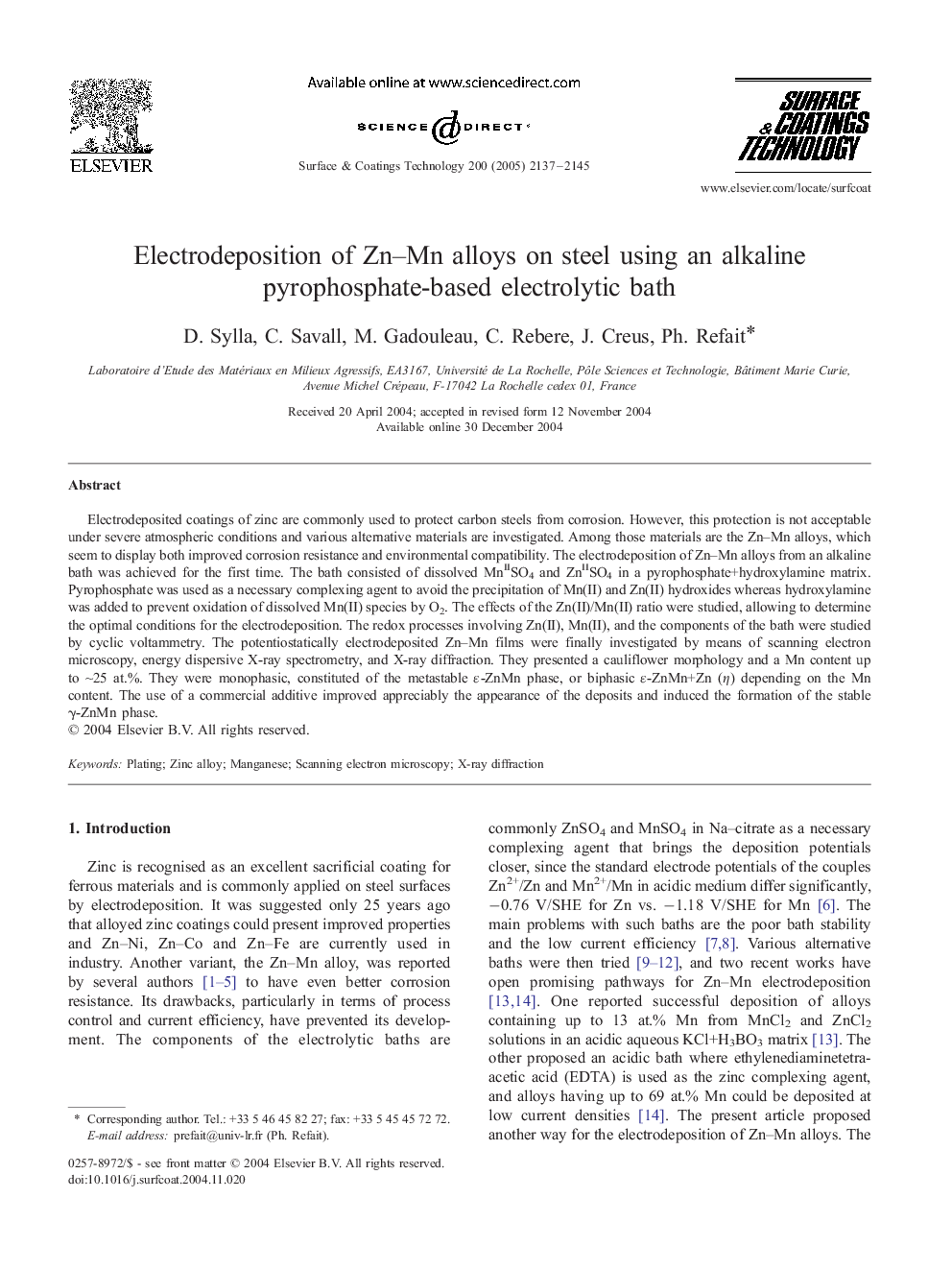| Article ID | Journal | Published Year | Pages | File Type |
|---|---|---|---|---|
| 1663423 | Surface and Coatings Technology | 2005 | 9 Pages |
Electrodeposited coatings of zinc are commonly used to protect carbon steels from corrosion. However, this protection is not acceptable under severe atmospheric conditions and various alternative materials are investigated. Among those materials are the Zn–Mn alloys, which seem to display both improved corrosion resistance and environmental compatibility. The electrodeposition of Zn–Mn alloys from an alkaline bath was achieved for the first time. The bath consisted of dissolved MnIISO4 and ZnIISO4 in a pyrophosphate+hydroxylamine matrix. Pyrophosphate was used as a necessary complexing agent to avoid the precipitation of Mn(II) and Zn(II) hydroxides whereas hydroxylamine was added to prevent oxidation of dissolved Mn(II) species by O2. The effects of the Zn(II)/Mn(II) ratio were studied, allowing to determine the optimal conditions for the electrodeposition. The redox processes involving Zn(II), Mn(II), and the components of the bath were studied by cyclic voltammetry. The potentiostatically electrodeposited Zn–Mn films were finally investigated by means of scanning electron microscopy, energy dispersive X-ray spectrometry, and X-ray diffraction. They presented a cauliflower morphology and a Mn content up to ∼25 at.%. They were monophasic, constituted of the metastable ɛ-ZnMn phase, or biphasic ɛ-ZnMn+Zn (η) depending on the Mn content. The use of a commercial additive improved appreciably the appearance of the deposits and induced the formation of the stable γ-ZnMn phase.
